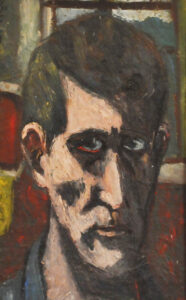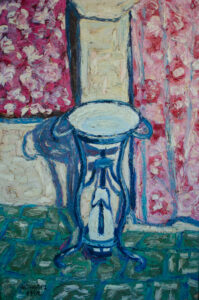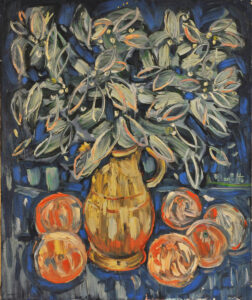ARTIST'S BIOGRAPHY

Alberico Verzoletto was born in the Botto di Trivero hamlet on 20th December 1935. He attended primary school in Botto and immediately showed a natural talent for arts in general. Former classmates still remember to this day how he used to help them with the drawing homework they were given. Father Italo, a hardworking and industrious man, dies of a lung condition contracted during the war when Alberico is only 9 years old. Mother Egle, due to a heart condition, leaves him an orphan at 19 years old.
THE MAN AND HIS ART

An artist with a vast and varied production, spanning from the ‘50s of the 19th century to the first decade of the 2000s, Alberico Verzoletto is a man with a multi-faceted personality. Fiery impulses, brooding melancholies, antithetical emotions giving rise to the chromatic contrasts seen in his works coexist in him. His frequent silence does not stem from a lack of arguments, rather from
conscious, free choices: the canvases do the talking, the canvases speak to the most sensitive viewer directly and with great intensity. To call him one of the many “valley painters” would be a gross reduction; in fact, the complexity of his research, both personal and artistic, goes beyond any possible definition, beyond the geographical and cultural limitations of his formative environment and, still to this day, hasn’t been adequately valued and recognized.
ARTISTIC THEMES

STILL LIVES
Verzoletto pays special attention to the details in still lives, especially when painting sunflowers. He does not portray them blooming in the field. Instead, like Van Gogh, he depicts them when they have already been plucked, at the start of their decay. Put into simple vases or lying on tables, they thus appear as a memento of the transience of existence, as reflections on the ephemeral and frail nature of beauty. The spectacle of nature is not meant to last in reality, but it is forever fixed in the work. The artist, through the practice of art, creates an intriguing dialogue between himself, the surrounding world and others, represented by the viewers of the work.
